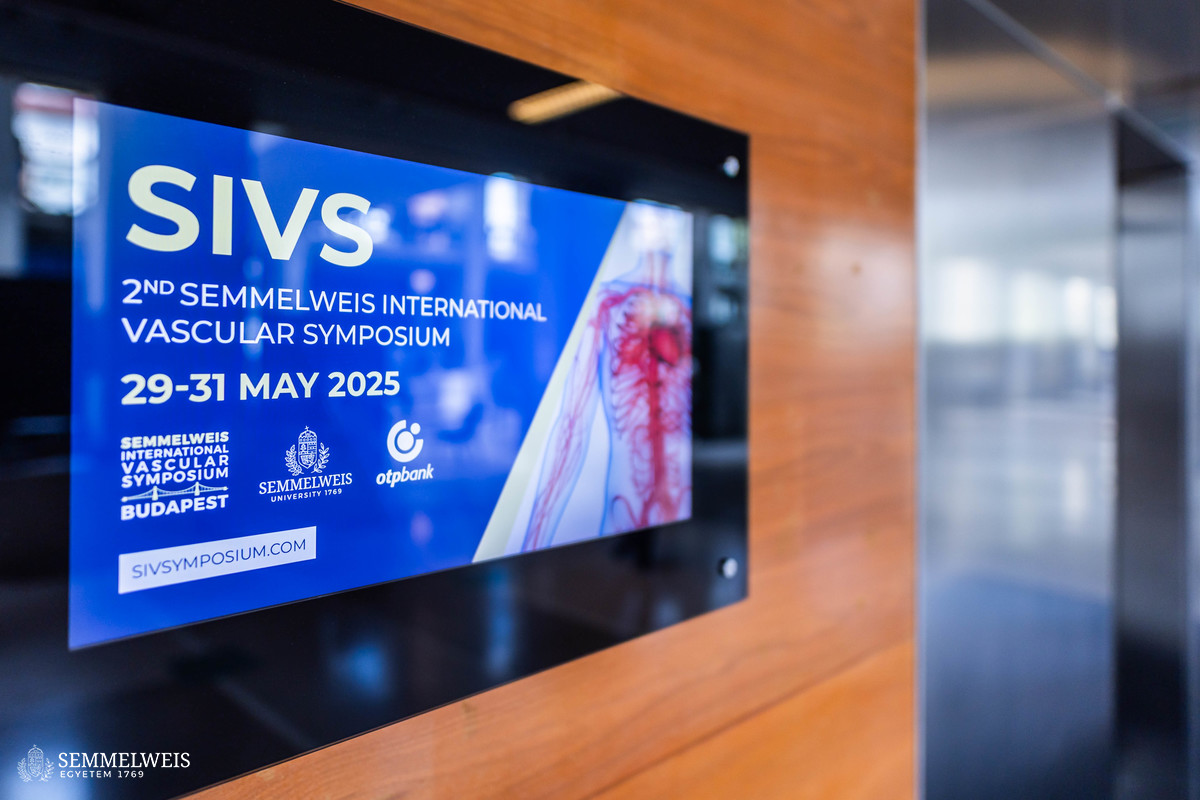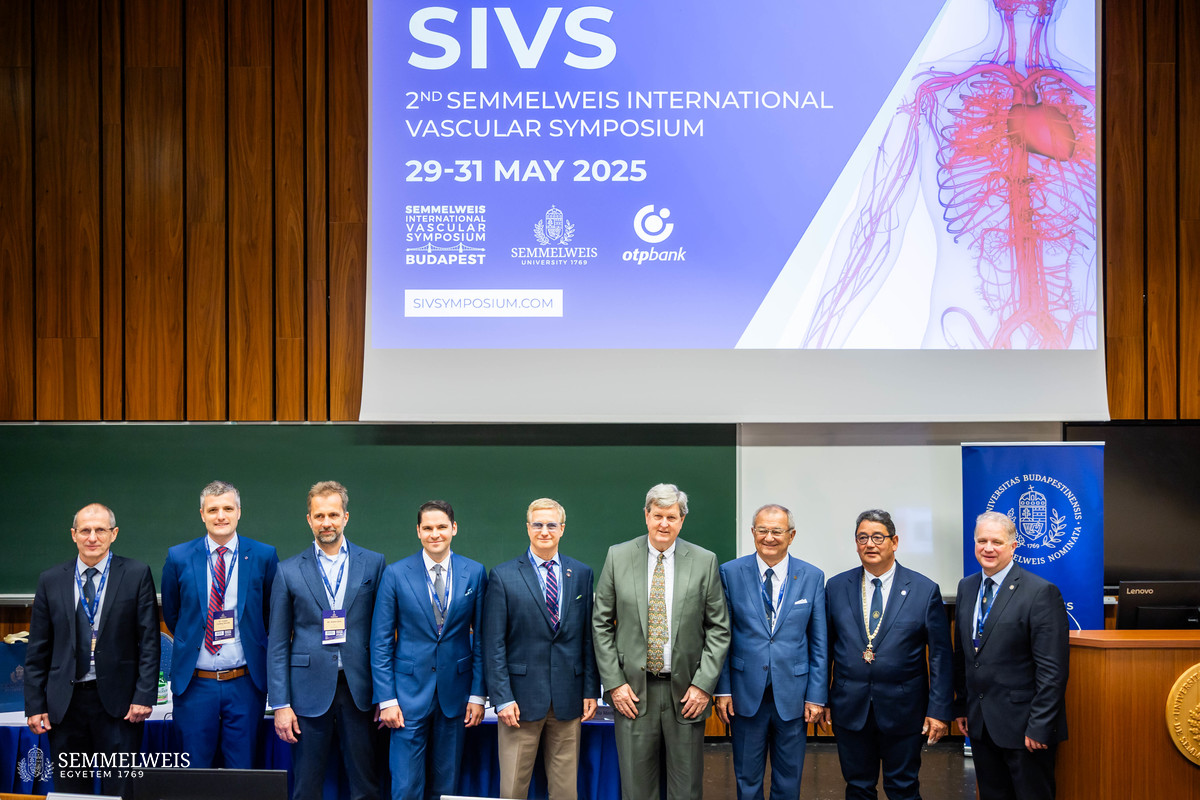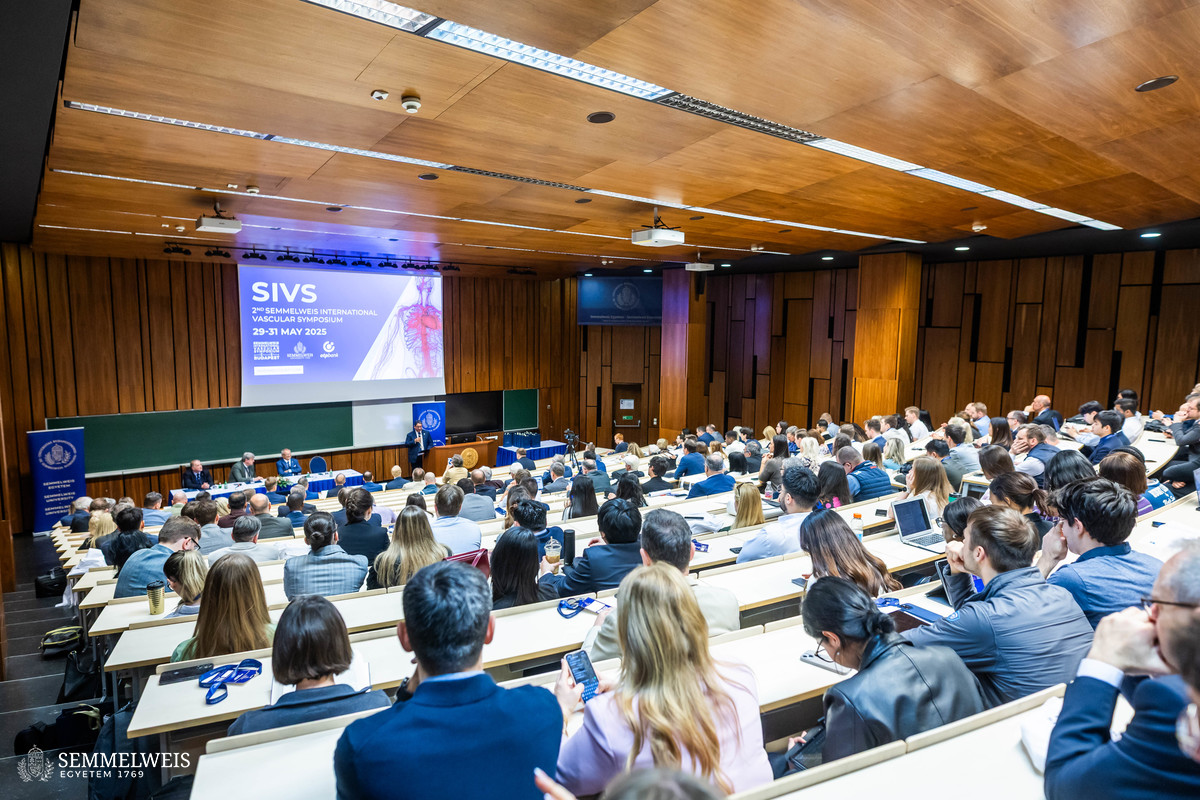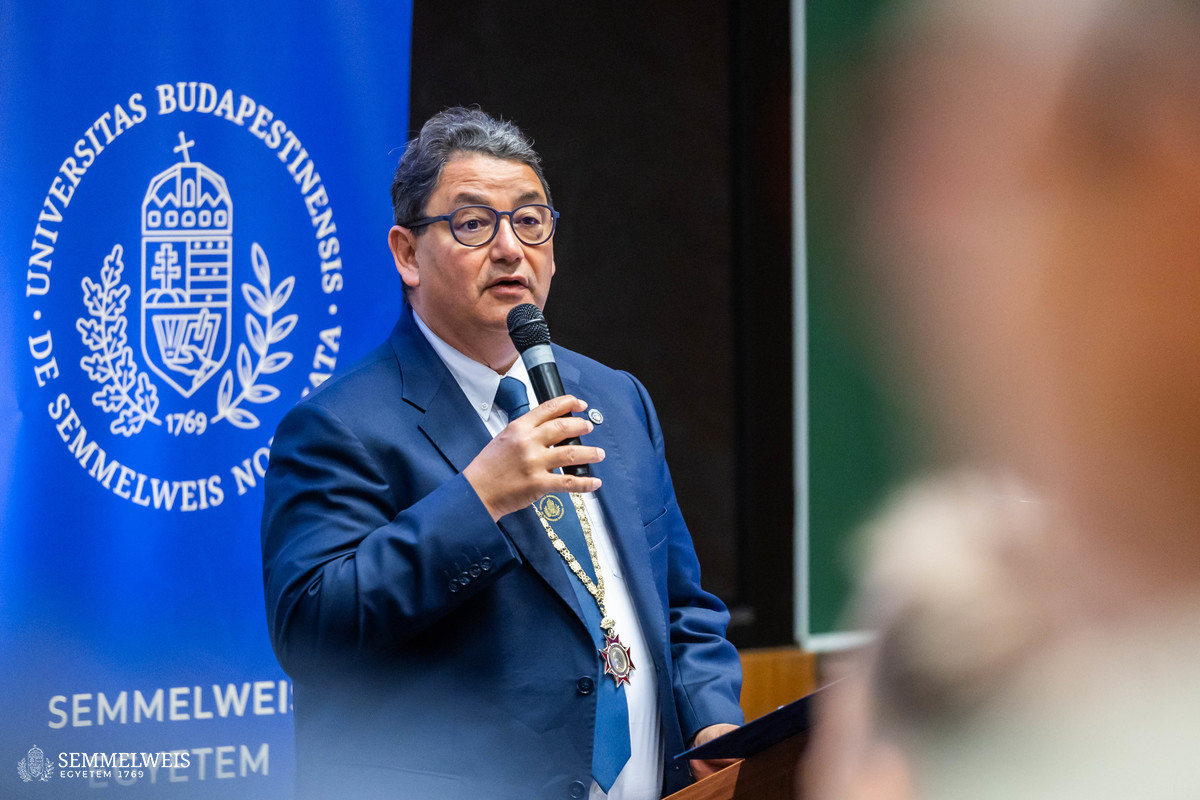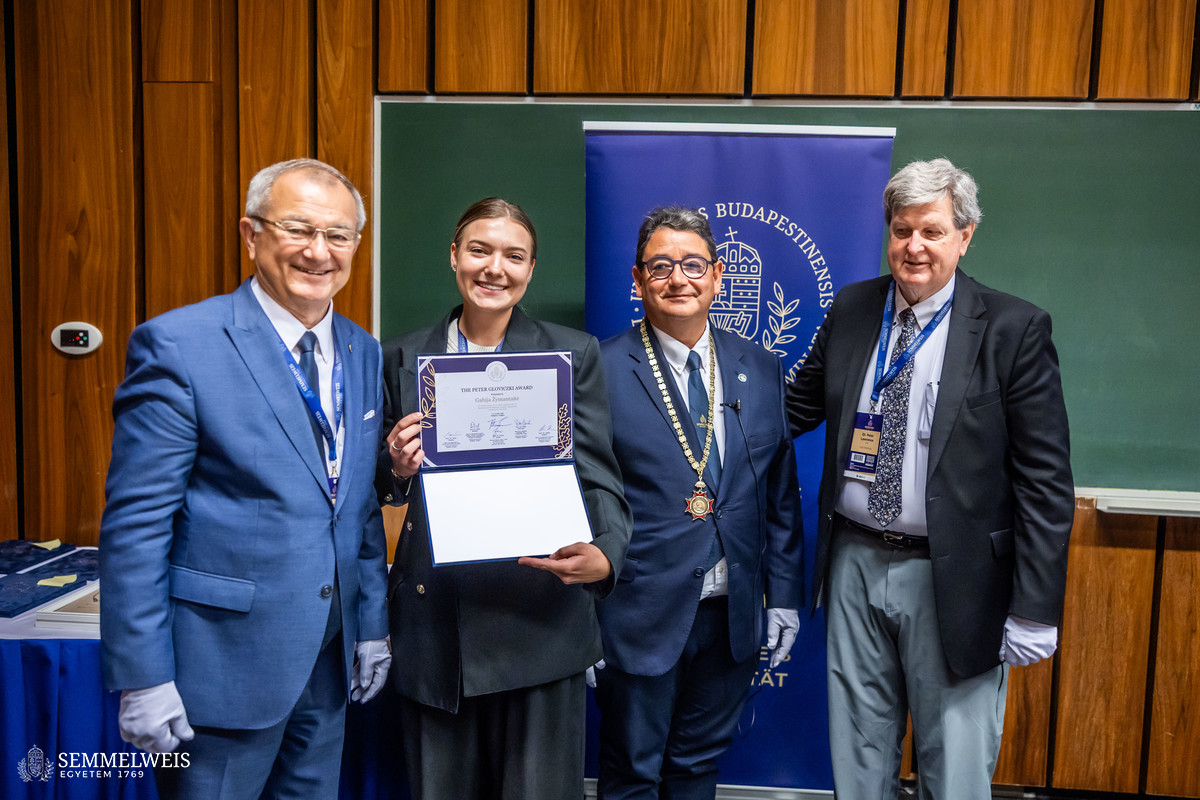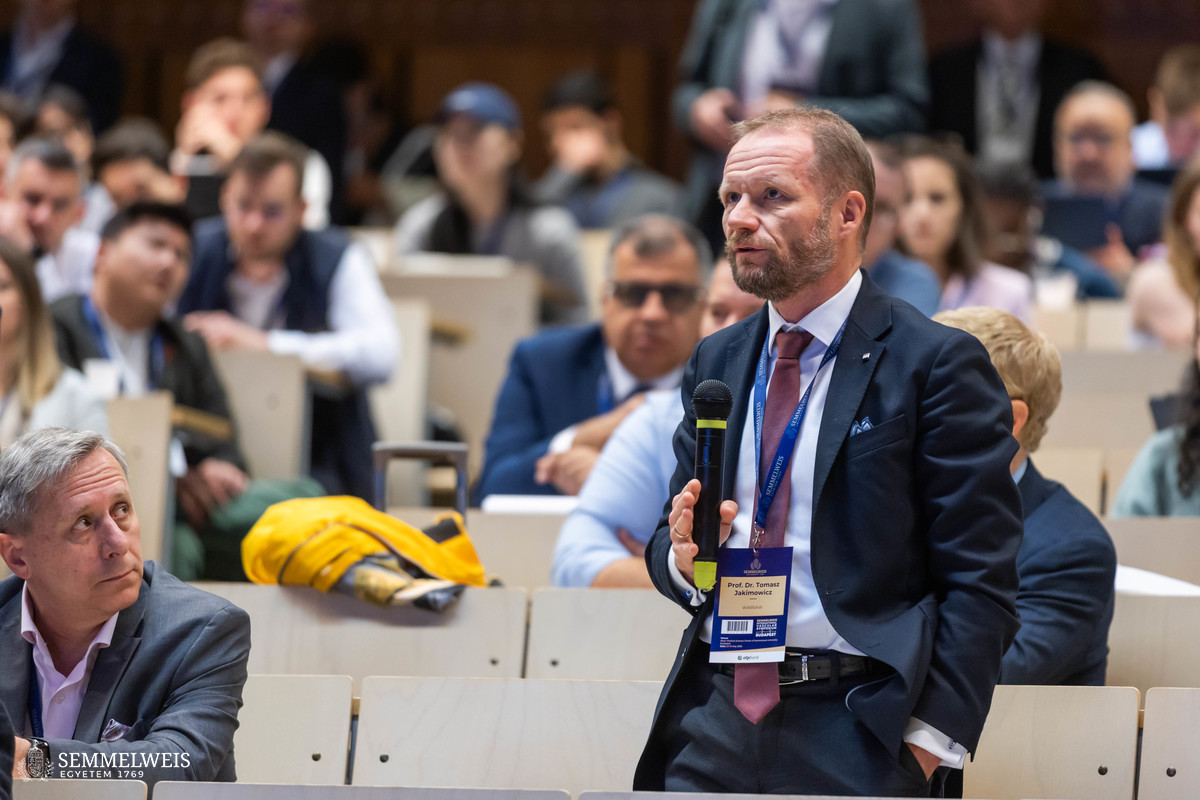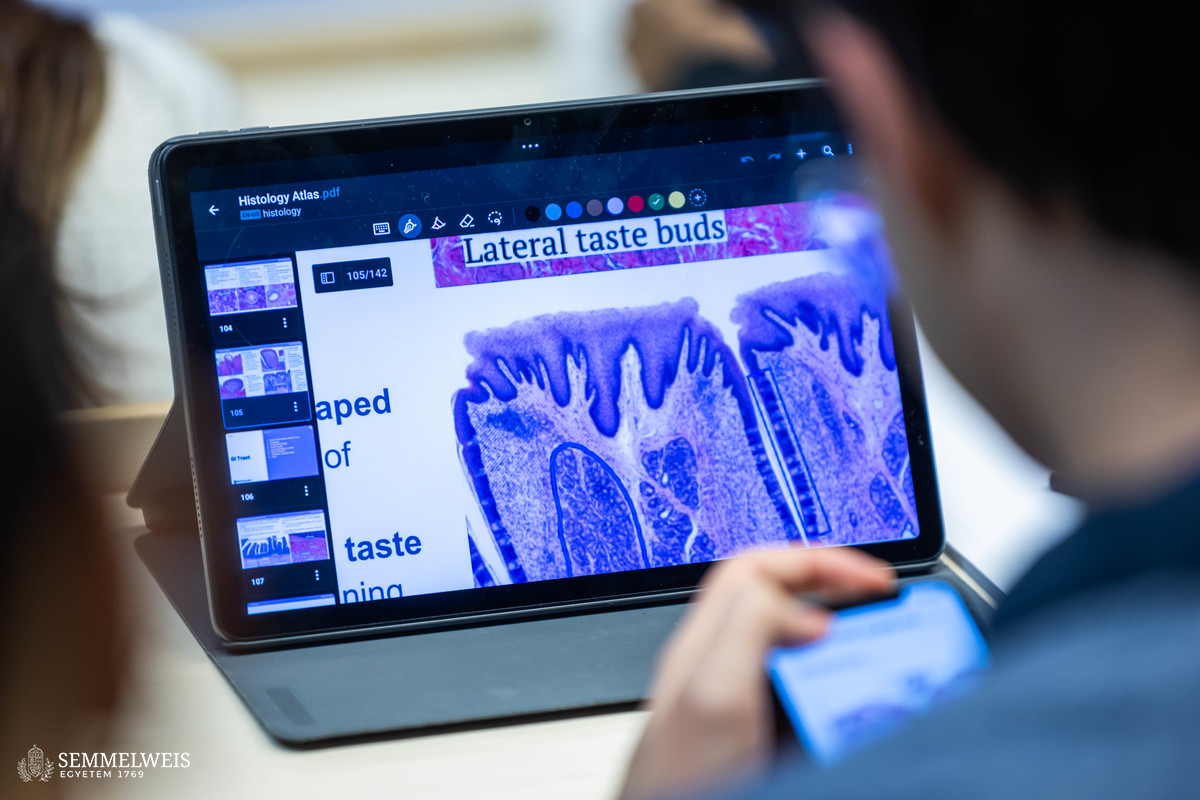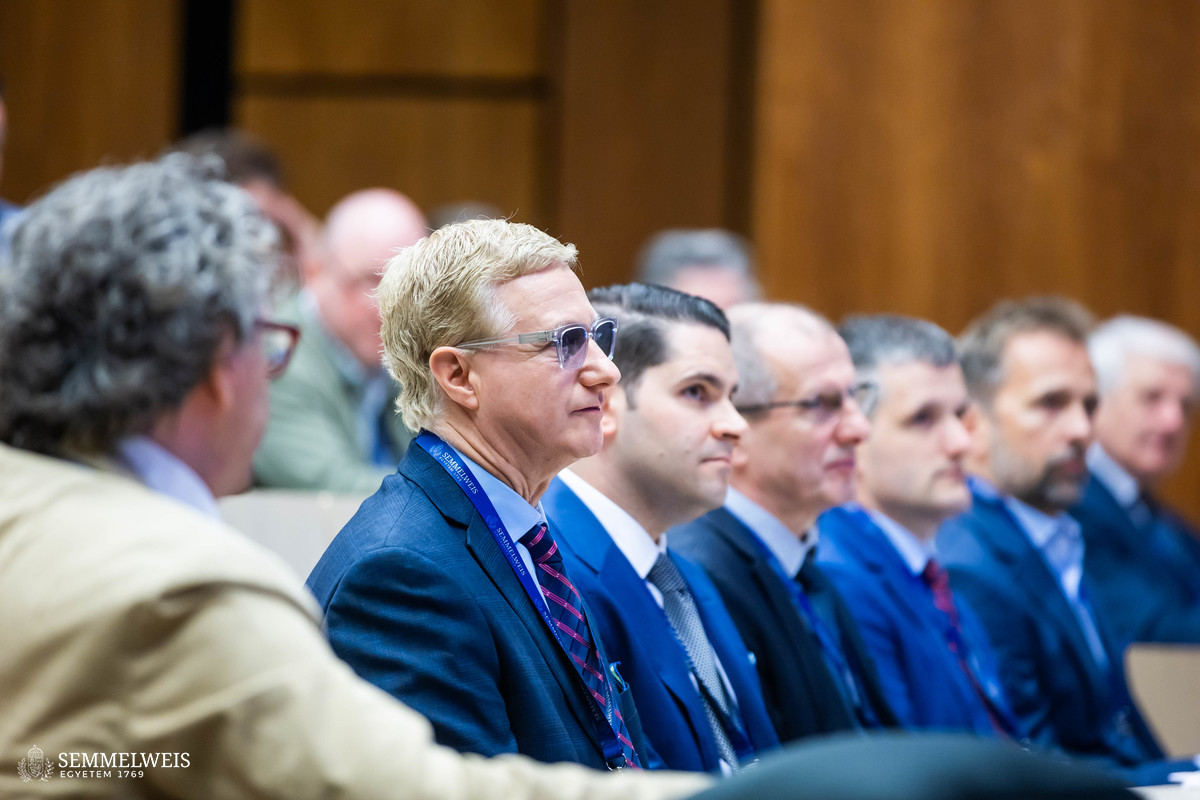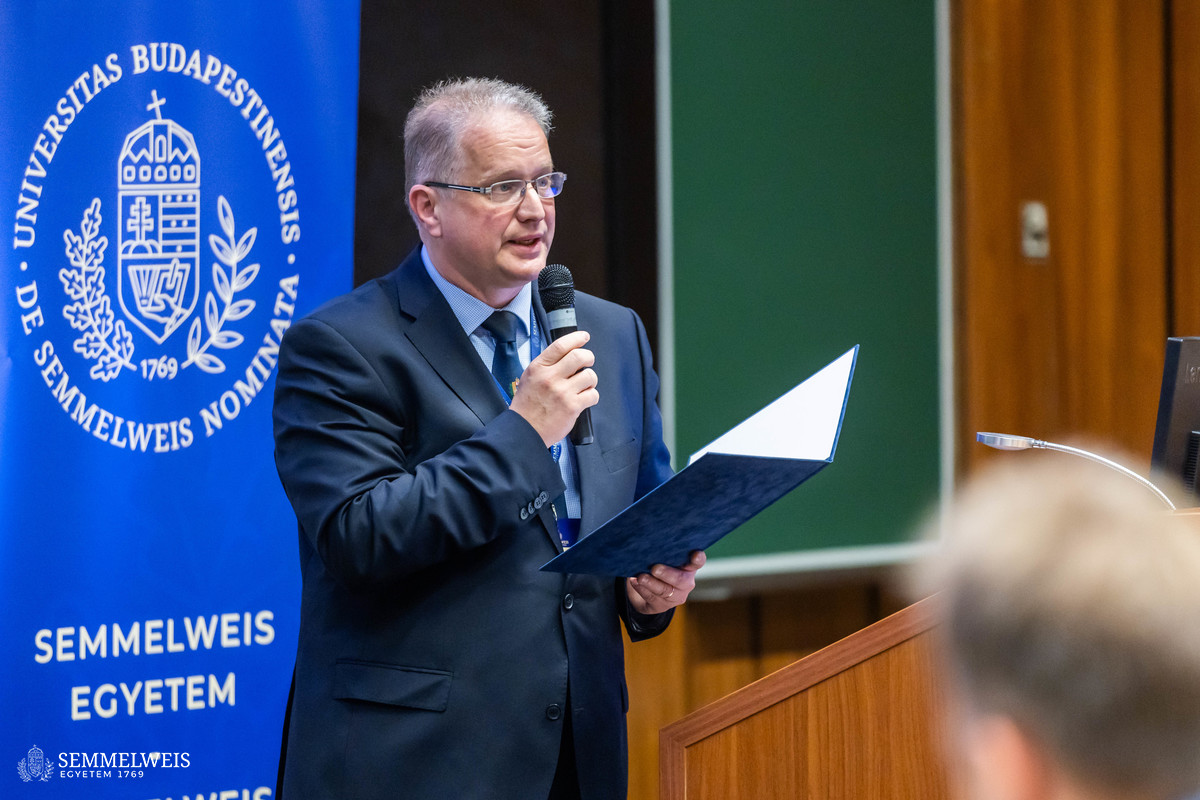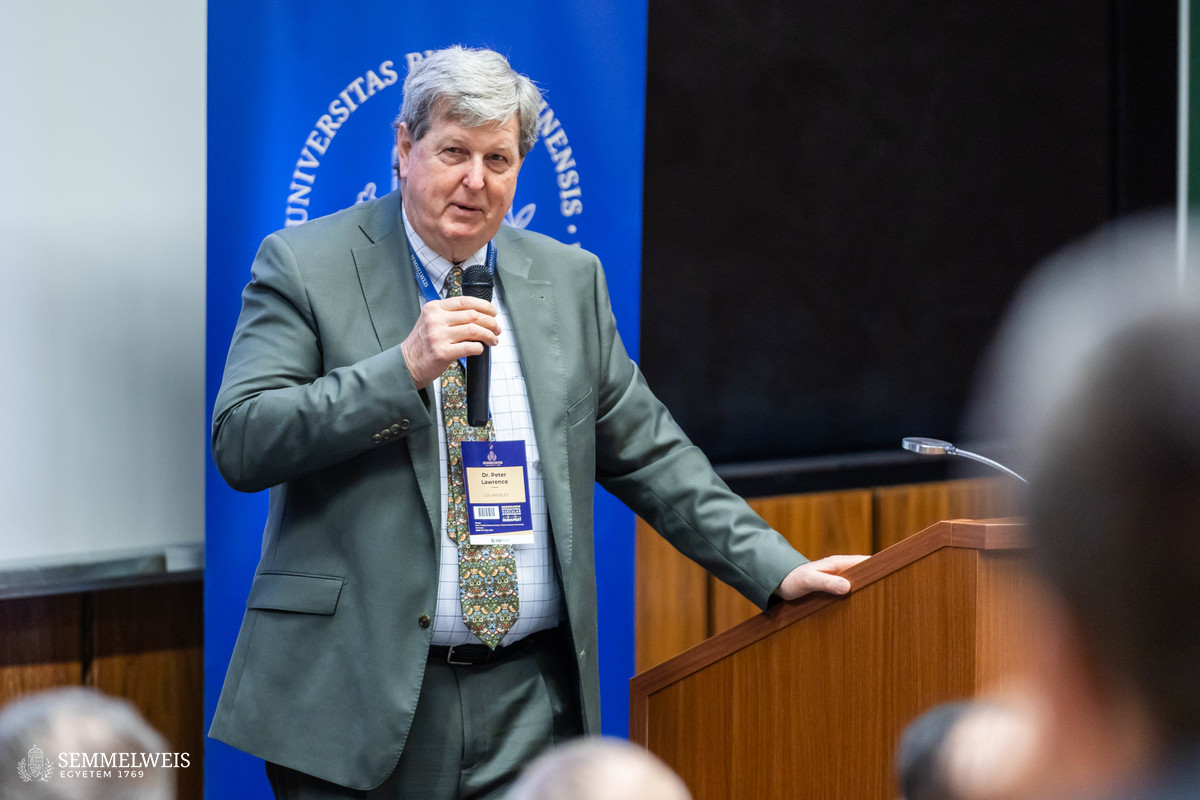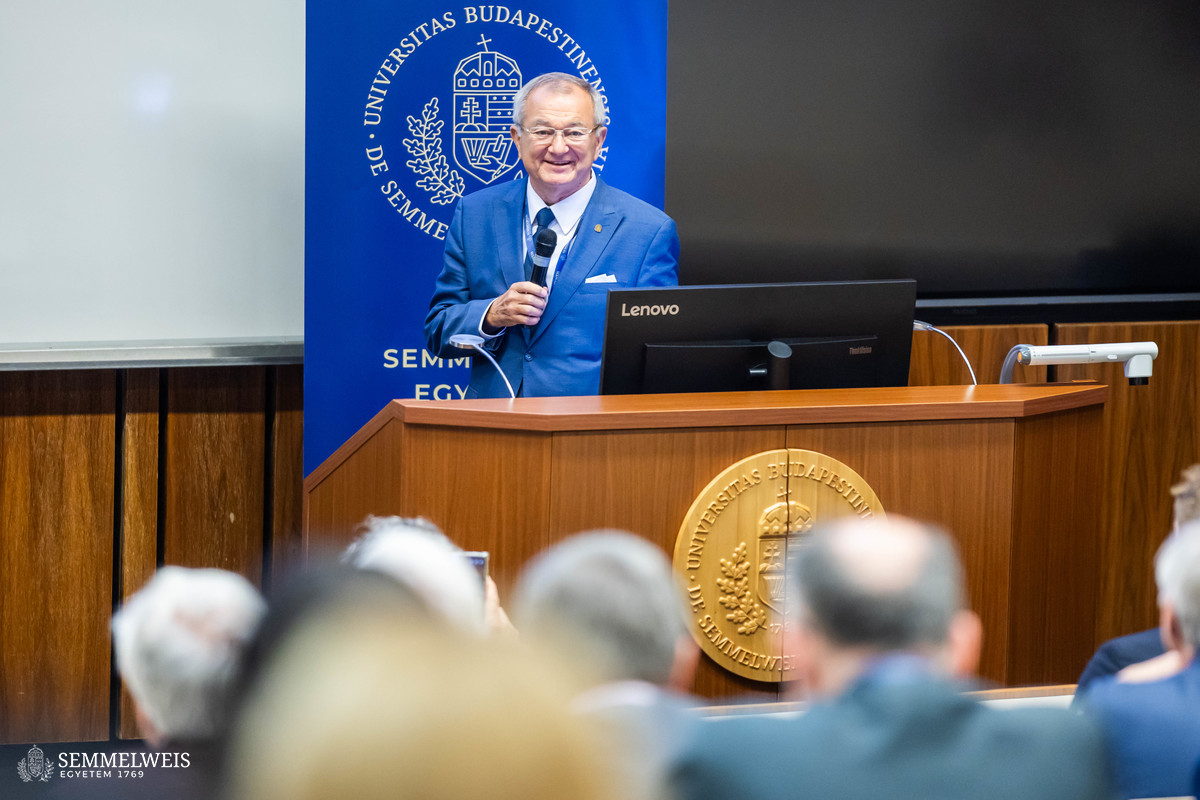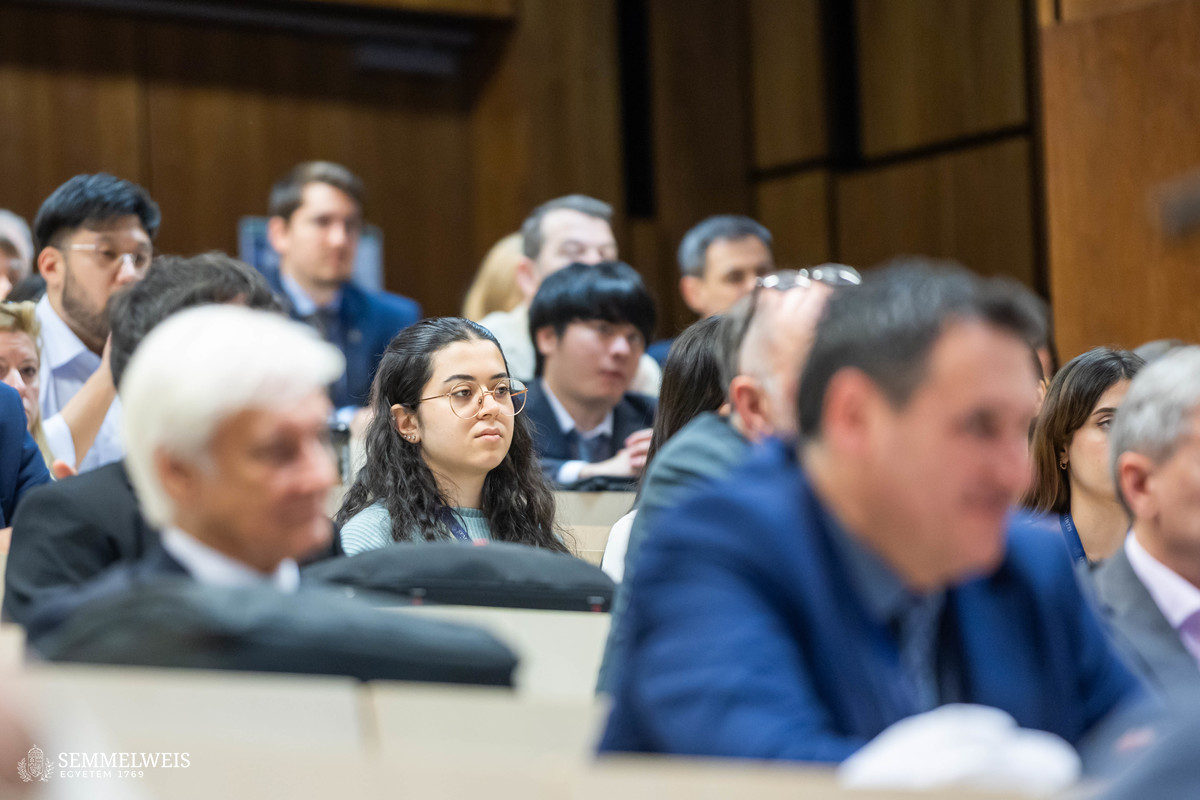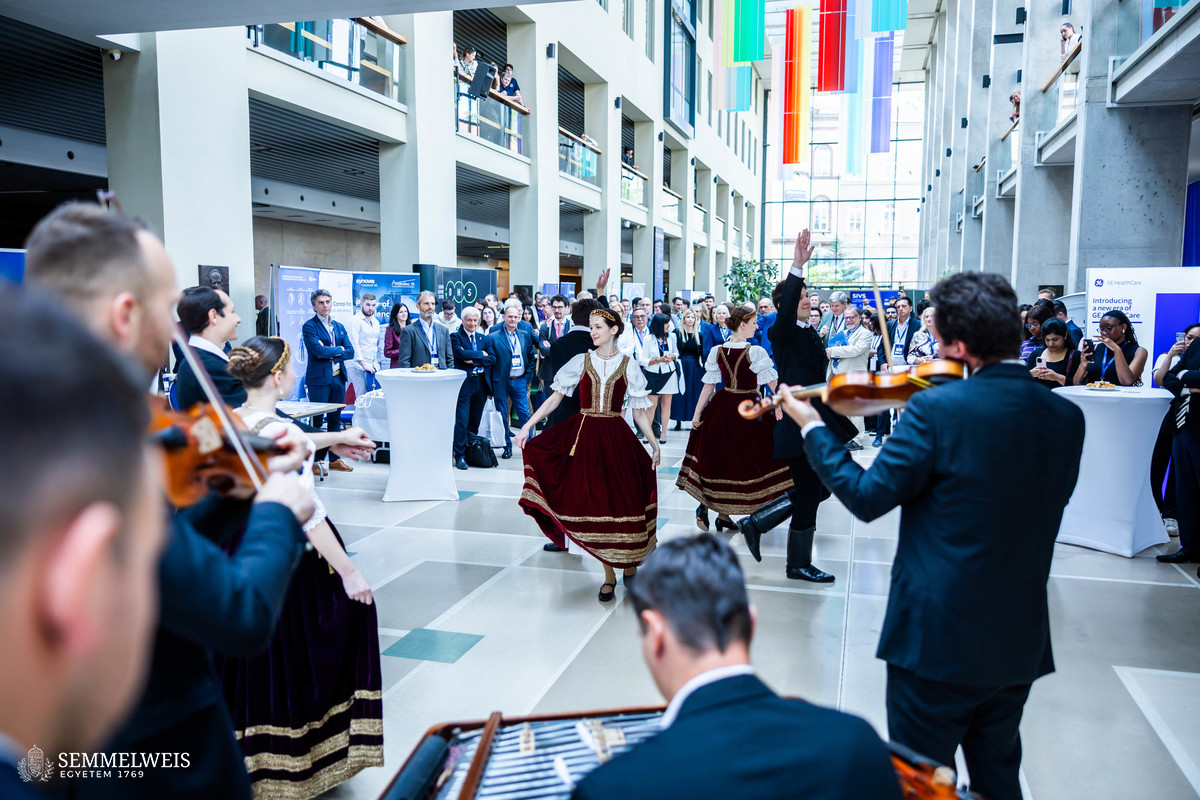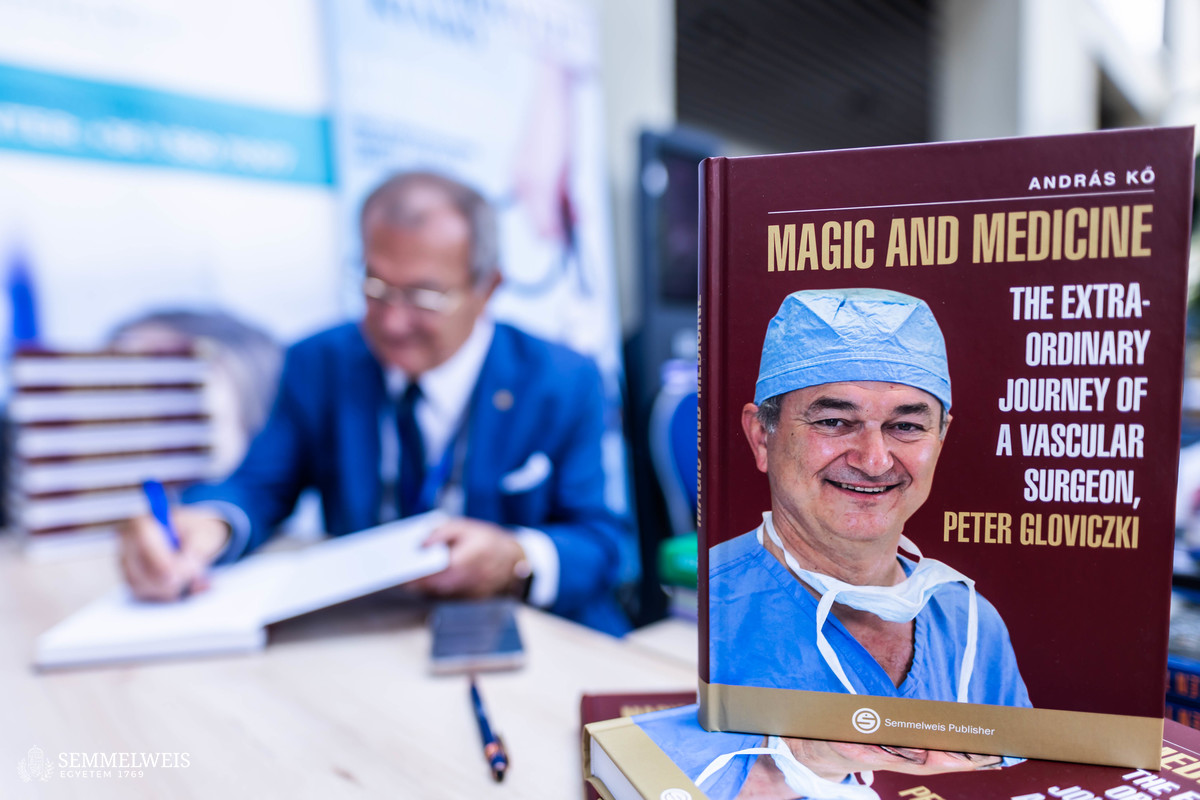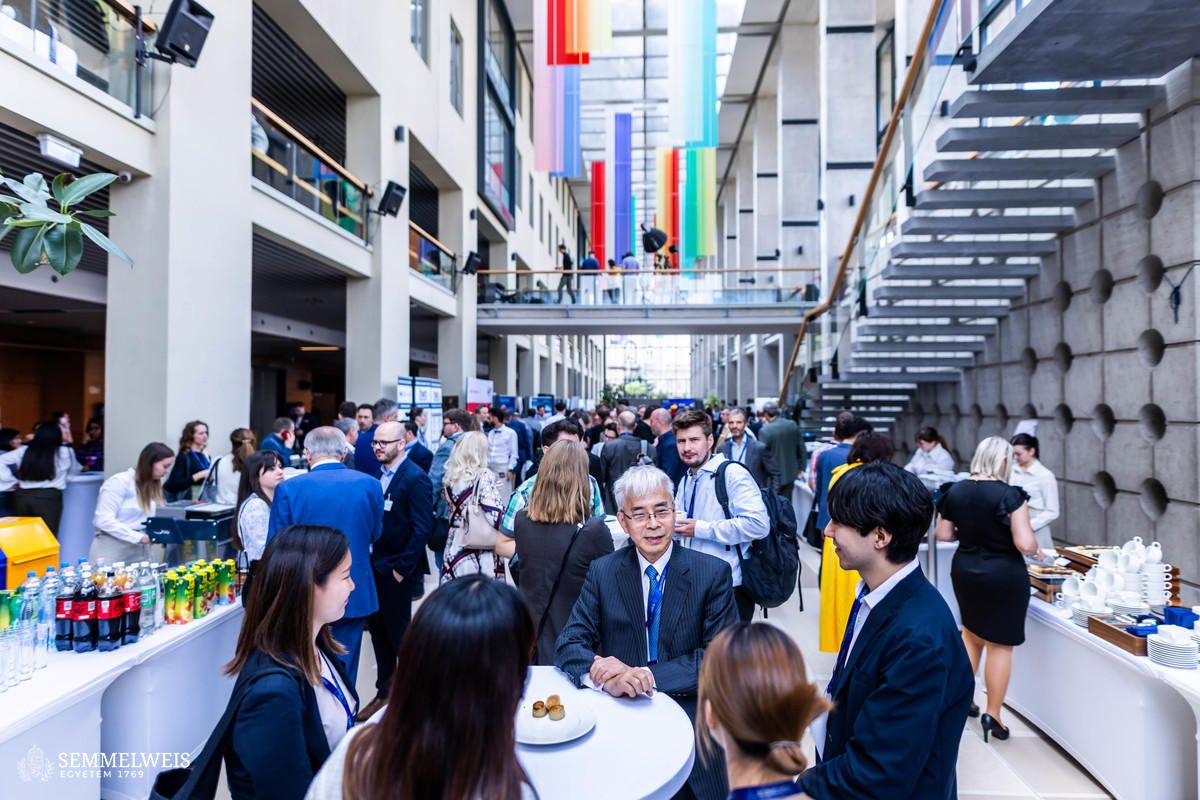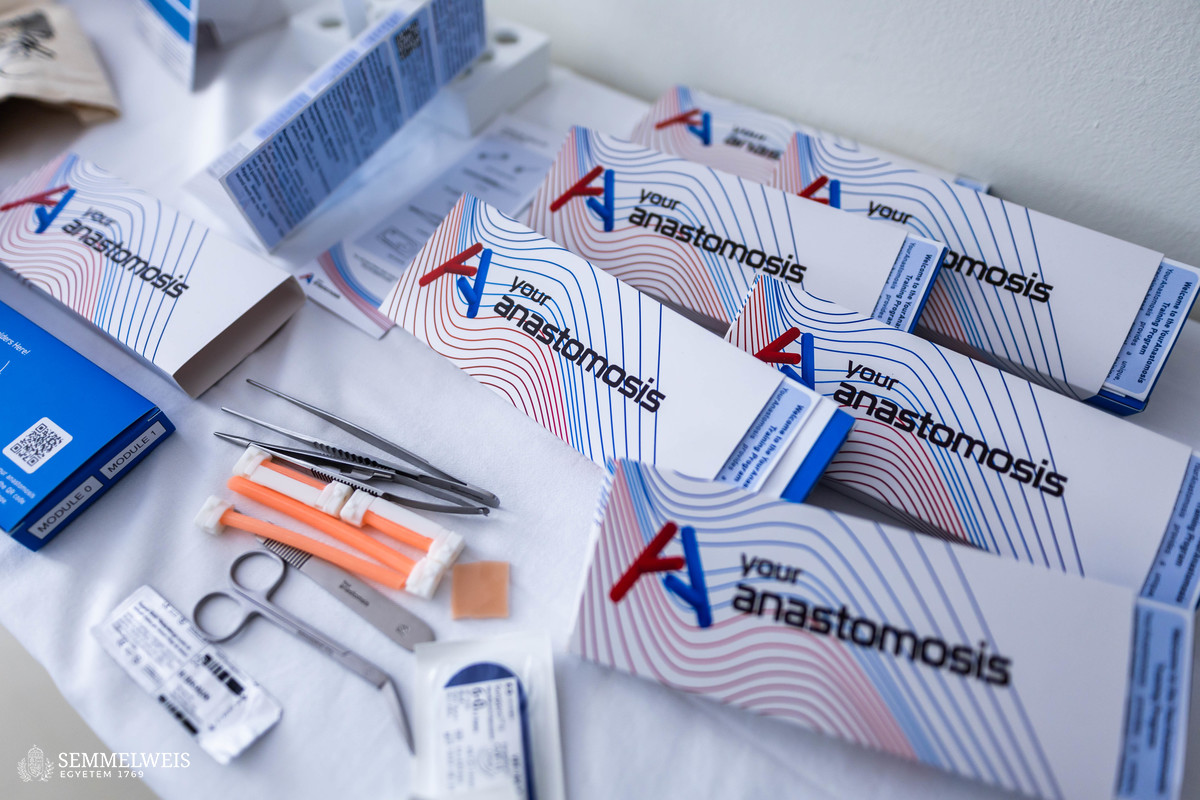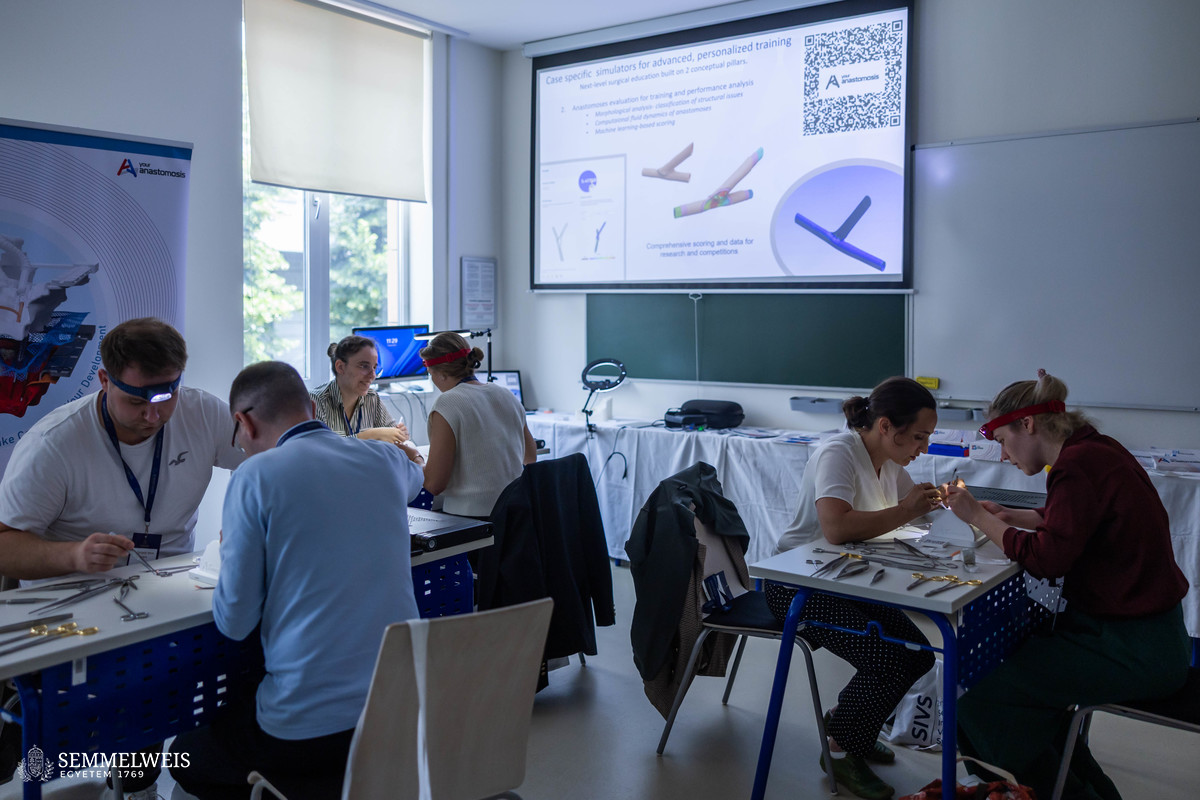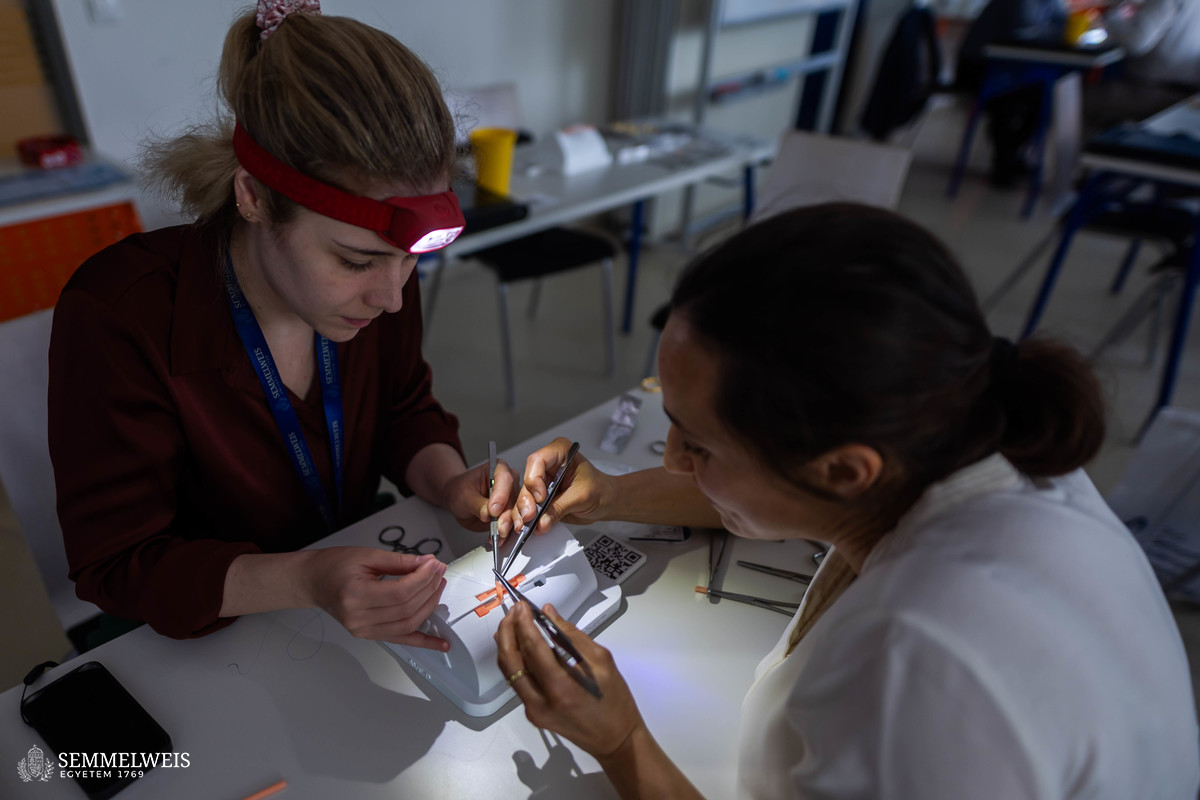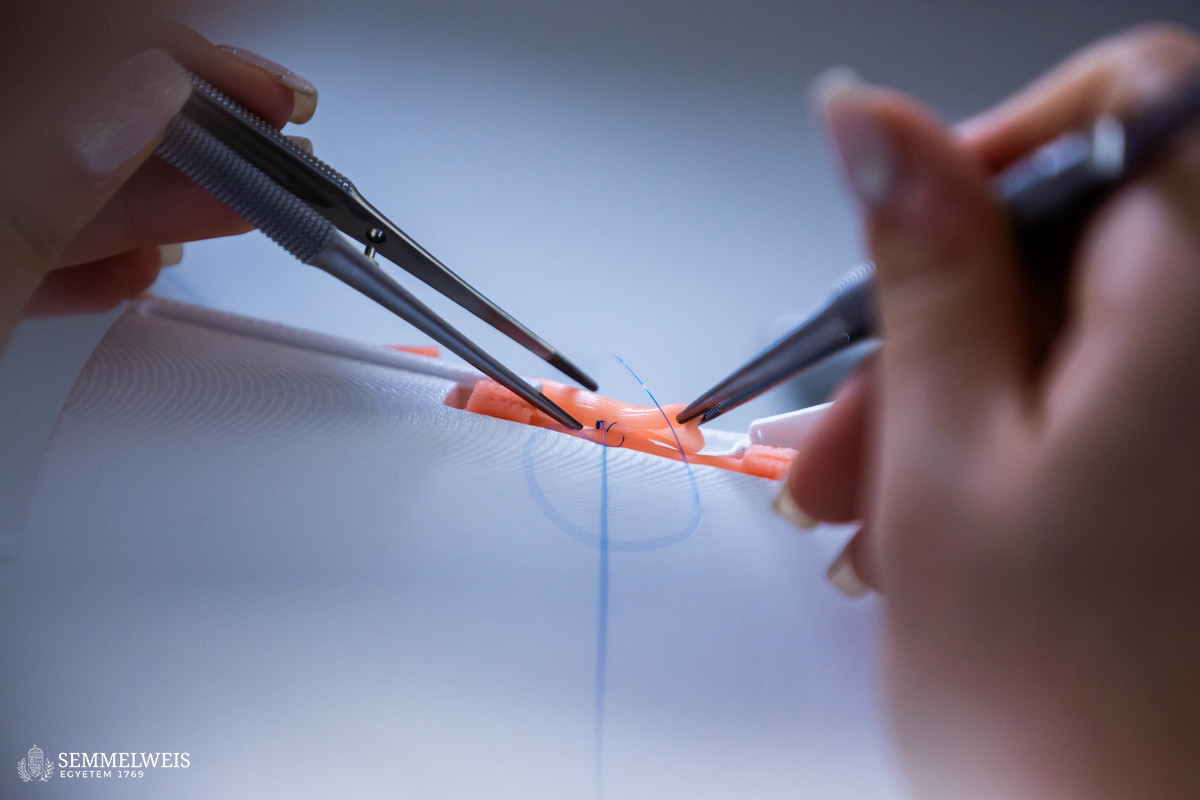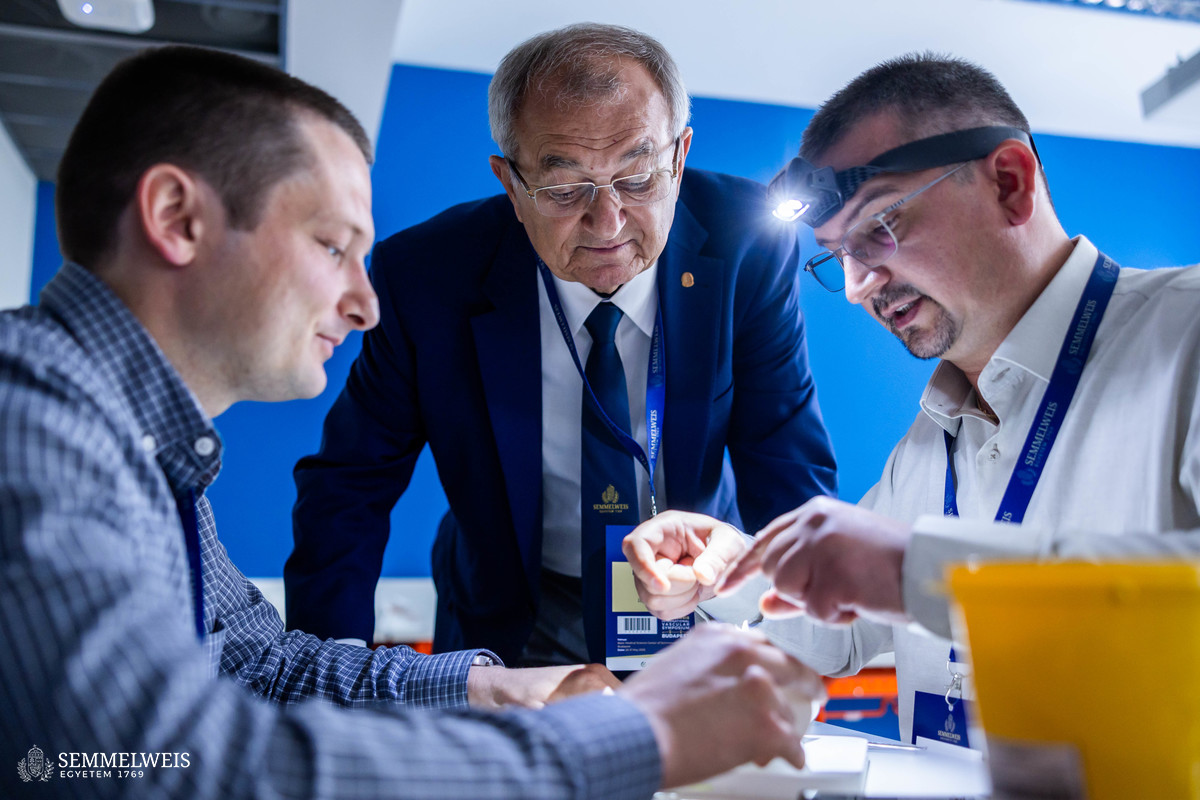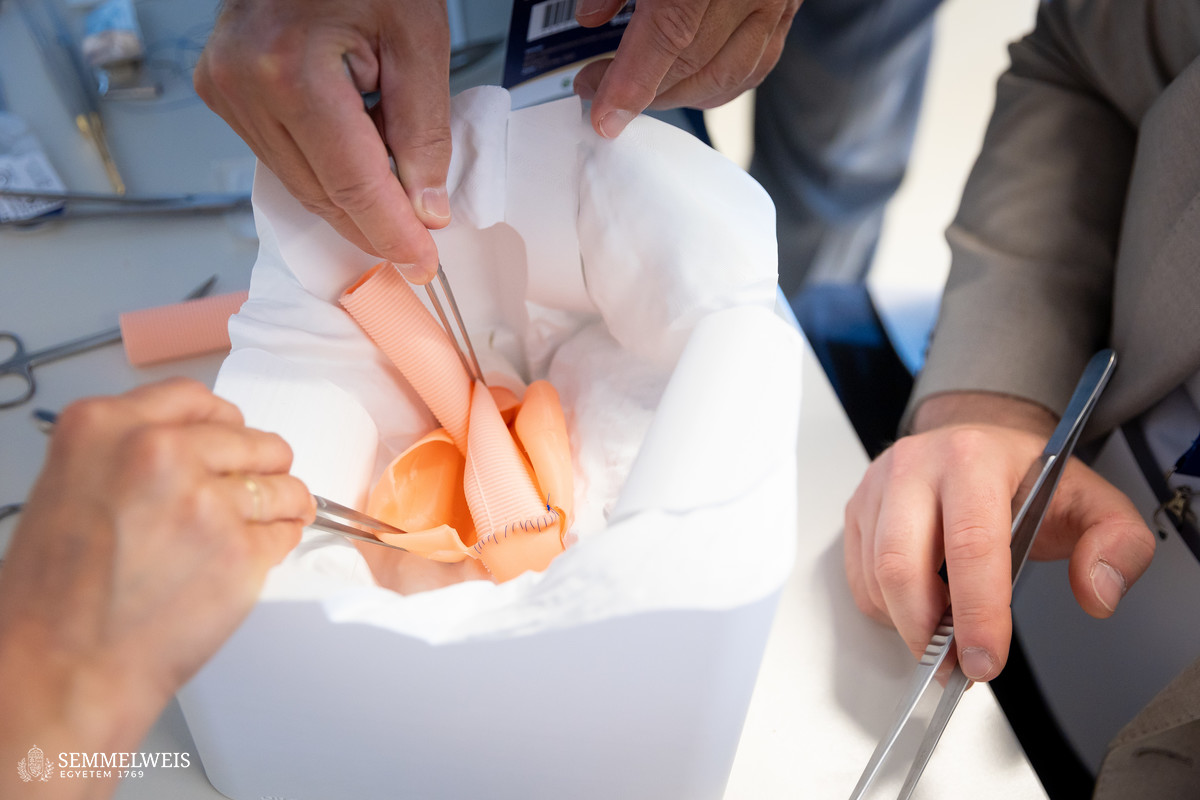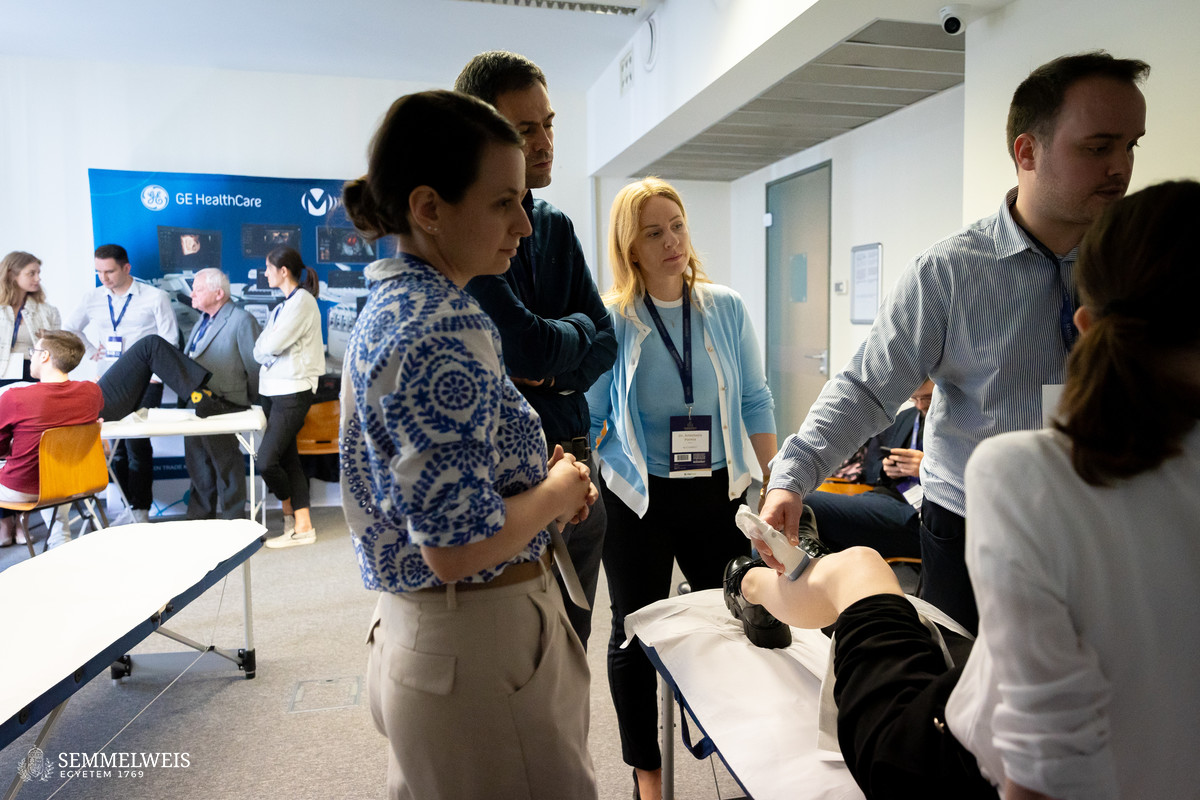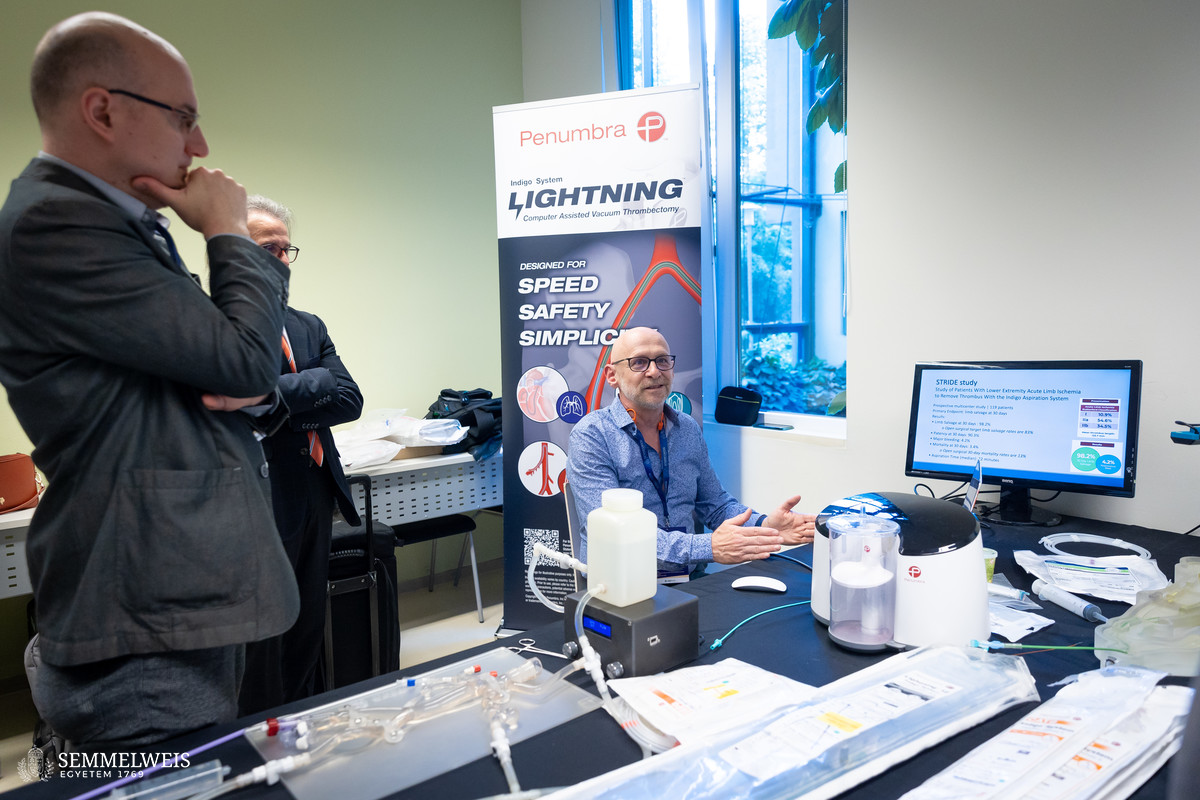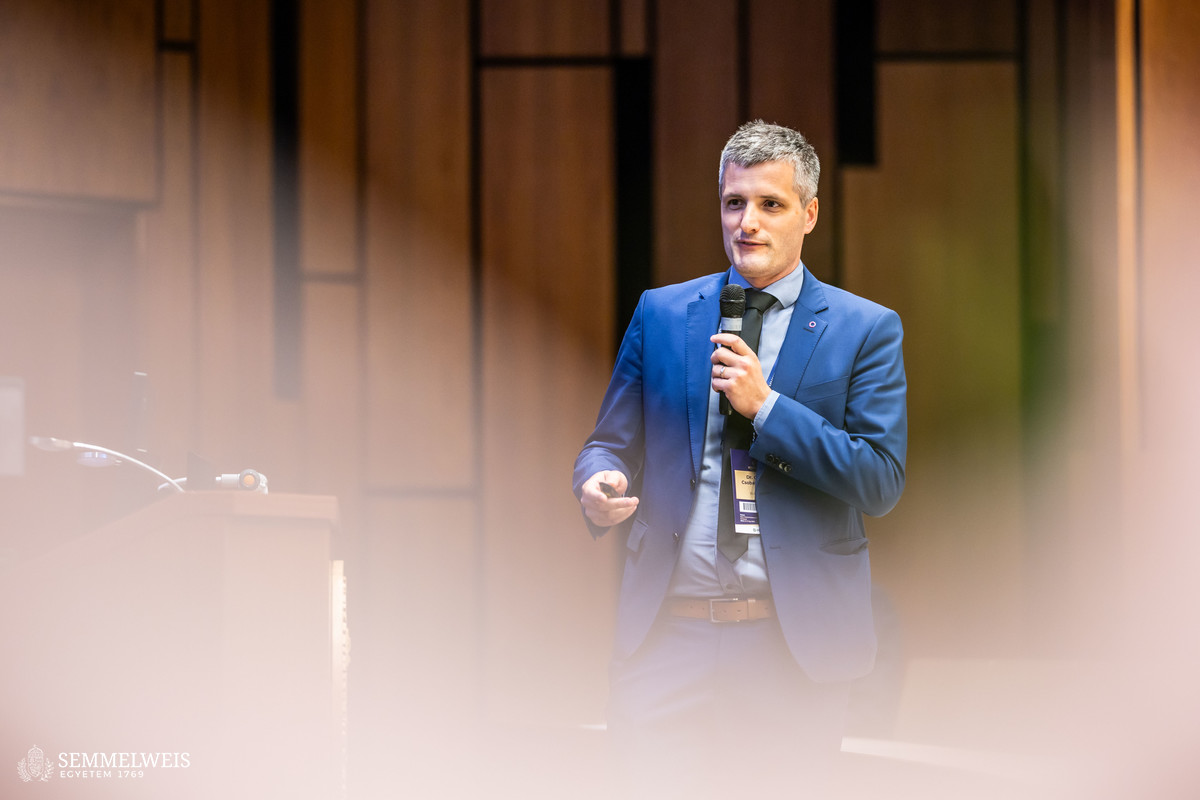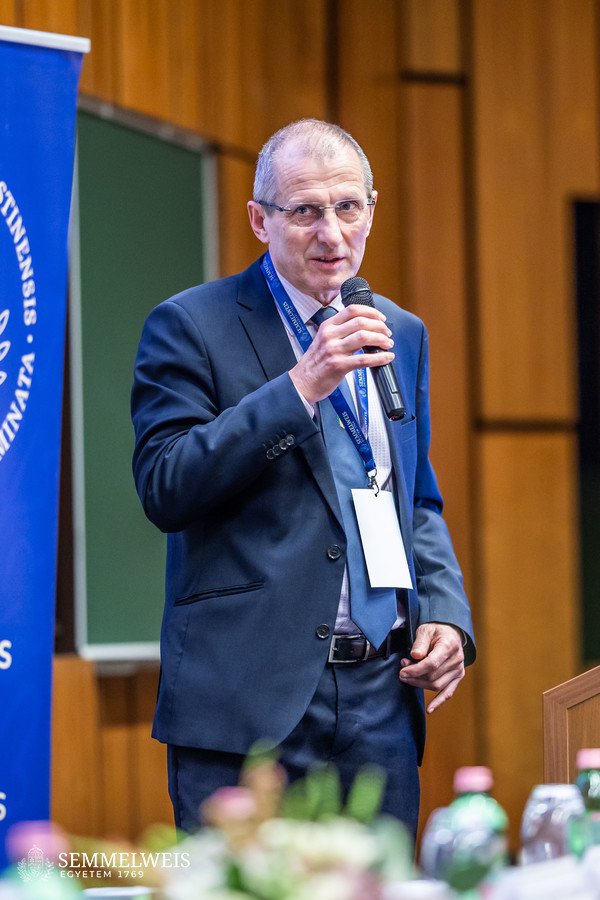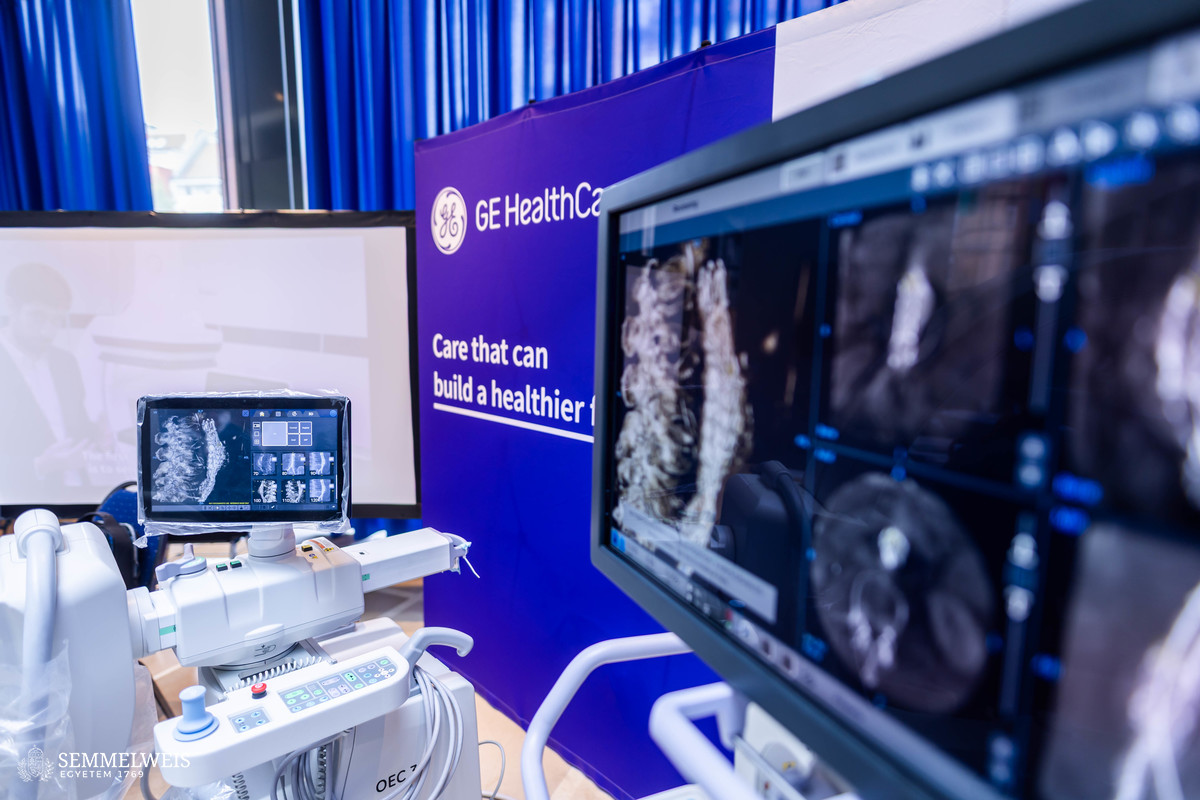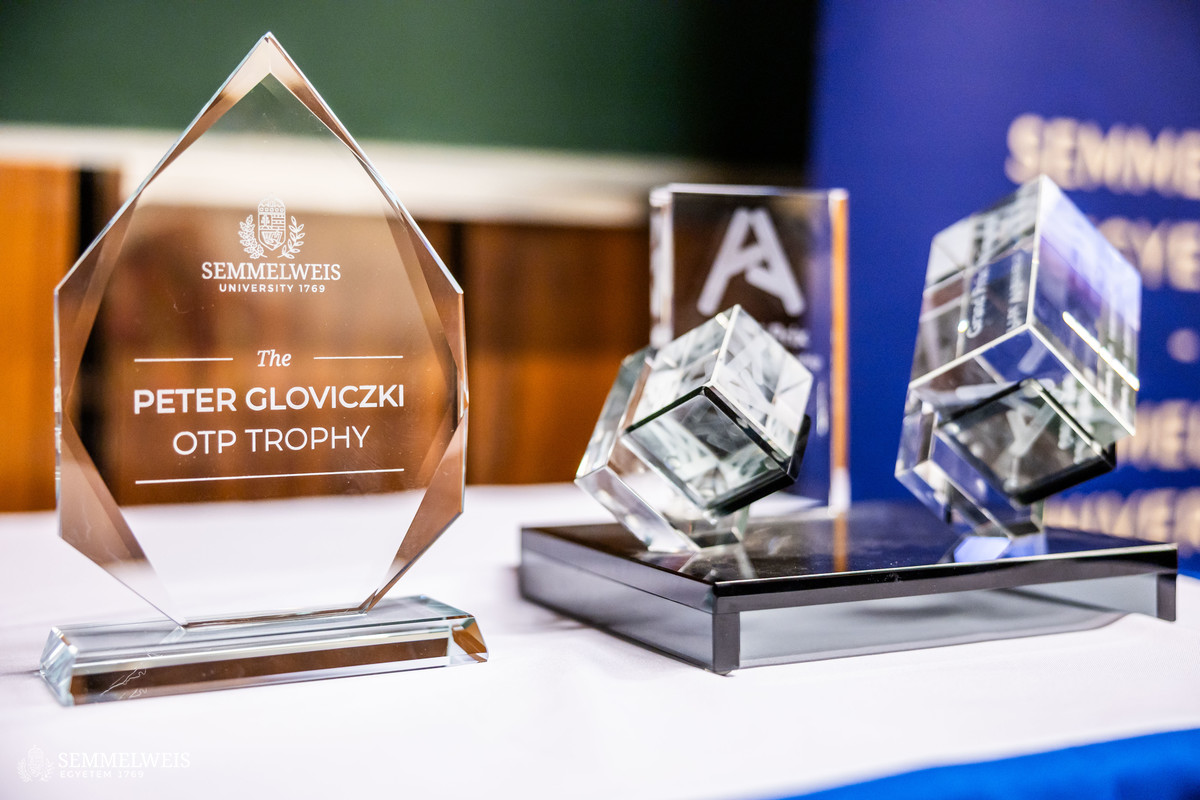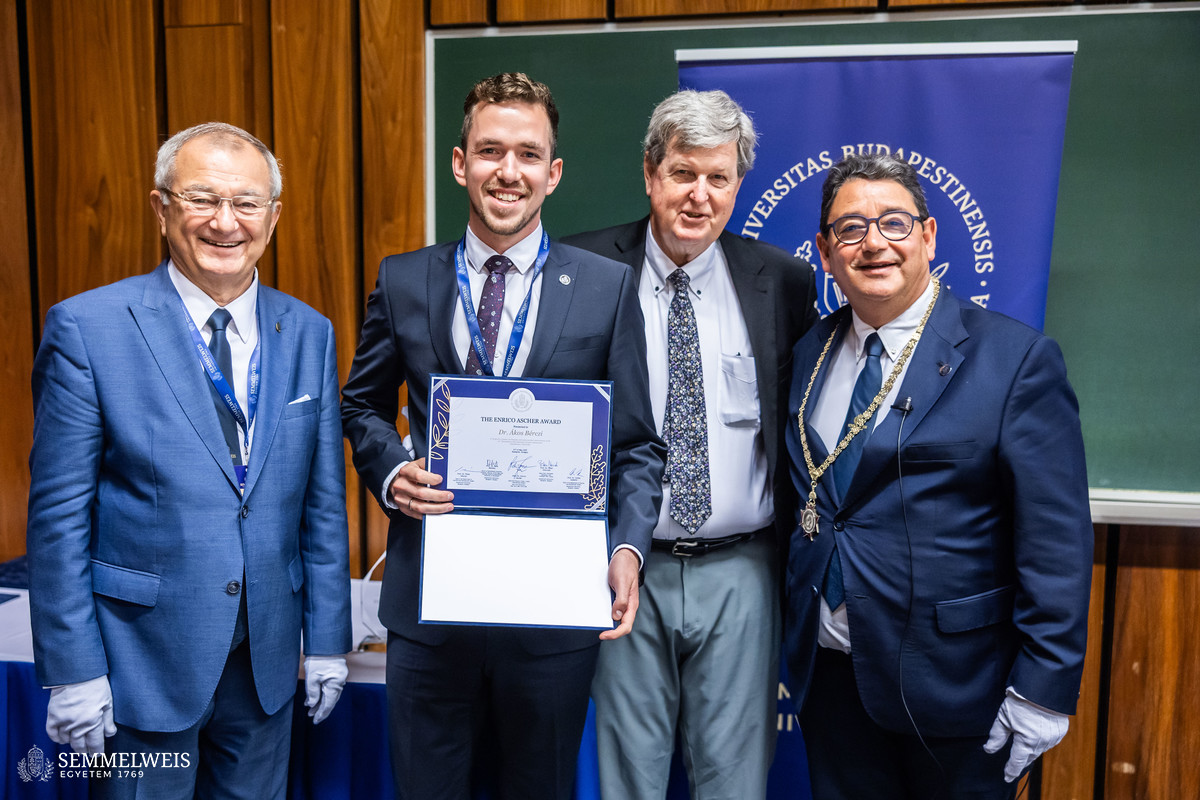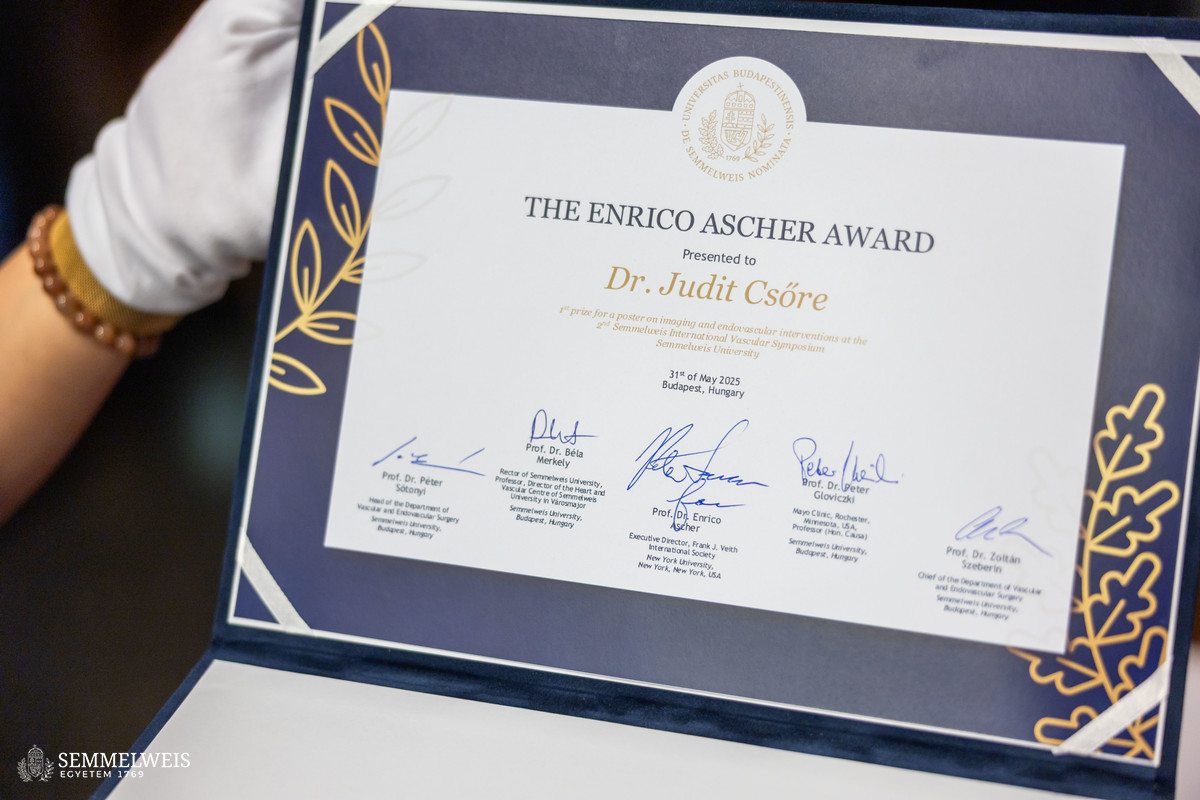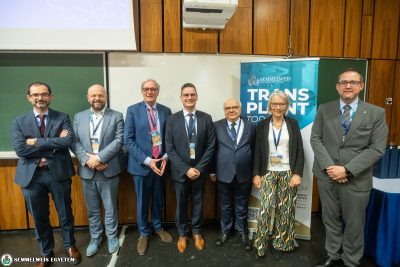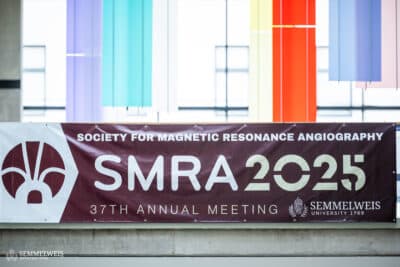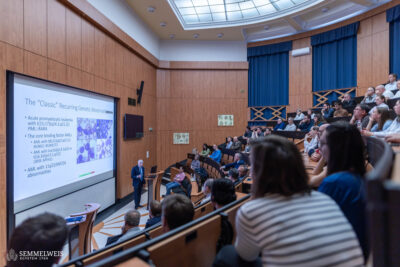In his speech at the opening ceremony held at the Basic Medical Science Center (EOK), Rector Dr. Béla Merkely reminded the audience that staying up to date with the latest knowledge was particularly important in the field of vascular surgery as well since cardiovascular diseases were the most common public health problems and the leading cause of death globally. “The Semmelweis International Vascular Symposium provides a world-class platform for promoting the latest techniques, research results, and developments in the medical, endovascular, and surgical treatment of vascular diseases. It is therefore a great pleasure and honor for me, as rector and head of the Városmajor Heart and Vascular Center, to co-organize our prestigious cross-border conference with the Frank J. Veith International Society for the second time,” he added. Dr. Béla Merkely pointed out that the strategic goal of the university was to contribute to the advancement of science and medical practice at the national and international level, so that the Hungarian population could benefit from the latest innovations and achievements as soon as possible.
The Semmelweis International Vascular Symposium serves this purpose perfectly as a platform for knowledge sharing, collaboration, and innovation in the treatment of vascular diseases. It contributes to the advancement of vascular disease management and collaboration within the scientific community at the university, national, and international levels. – Dr. Béla Merkely
In his speech, Dr. Péter Sótonyi, Head of the Department of Vascular and Endovascular Surgery at the Városmajor Heart and Vascular Center, referenced American surgeon William James Mayo, one of the founders of the Mayo Clinic, emphasizing that the aim of the 2nd Semmelweis International Vascular Symposium was to make us ever more competent – through continuous development and learning – in helping our patients recover. The department head also thanked the conference sponsors, above all the diamond sponsors OTP Bank and the National Research, Development and Innovation Office (NKFIH), as well as the gold sponsor, the American company GE HealthCare – GEMS SCS. In his welcome speech, Dr. Peter Lawrence, President of the Frank J. Veith International Society and Professor Emeritus at the University of California, Los Angeles (UCLA), emphasized the importance of international collaboration in a relatively narrow field such as vascular surgery and the treatment of vascular diseases. He also mentioned that Dr. Enrico Ascher, founder and Executive Director of FJVIS, was unfortunately unable to attend the conference due to illness, so it was he who was representing the society.
Afterward Dr. Péter Gloviczki, former President of FJVIS, Semmelweis Budapest Award-winning, world-renowned vascular surgeon and Professor Emeritus at the Mayo Clinic in the United States, briefly introduced the symposium program and thanked the sponsors and everyone who had made the event possible with their donation. He made special mention of Dr. Kathleen Ozsvath’s generous donation in honor of the recently deceased Dr. Iván Abonyi. Dr. Iván Abonyi was a Holocaust survivor and an outstanding physician who graduated from the then Budapest University of Medicine in 1953, and whose jubilee honorary “iron” degree was signed 65 years later by Rector Dr. Béla Merkely. Dr. Péter Gloviczki, starting from the Városmajor Heart and Vascular Center, became the Hungarian-born vascular surgeon with the most successful career, and played a key role in the launch of the now-traditional SIVS.
At the end of the opening ceremony, Dr. Bernardo C. Mendes, formerly of the Mayo Clinic, currently Professor of Surgery at UCLA, gave a talk. Based on more than 15 years of experience, he reported on the development of complex aortic aneurysm treatments. He highlighted the evolution from traditional open surgery, with high rates of mortality and spinal cord injury, to advanced endovascular techniques. Dr. Bernardo C. Mendes presented data on the endovascular repair of complex aortic aneurysms using fenestrated and branched endografts (FB-EVAR), showing technical success rates of 95-99 percent and 30-day mortality as low as 1.8-2.7 percent. In addition, he emphasized advances in device design, imaging, and spinal cord protection protocols, including the move away from prophylactic spinal drainage. In his presentation, Dr. Bernardo C. Mendes also noted the gradual shift toward physician-modified grafts due to regulatory limitations and the importance of well-organized teamwork, institutional protocols, and long-term patient follow-up. His presentation underscored the extent to which endovascular techniques can improve outcomes in complex aortic aneurysm treatments.
The first day of the symposium was devoted to workshops, which gave participants the opportunity to learn new endovascular and ultrasound imaging techniques. A total of eight workshops were held at EOK and the Városmajor Heart and Vascular Center, including three surgical simulation workshops with 36 participants. The practical training sessions offered by Youranastomosis, a company founded in 2018 with the aim of innovating surgical education, provided a unique opportunity. On the second and third days, in addition to the presentations, nine industry symposia were held, which allowed industry representatives to showcase the latest developments and technologies in their fields.
On the second and third days of the event, a total of 118 presentations were given on the medical, surgical, and endovascular treatment of aortic, arterial, venous, and lymphatic diseases; vascular imaging; and vascular research. In addition to Dr. Péter Gloviczki’s, there were presentations by the most distinguished faculty members of Semmelweis University’s Department of Vascular and Endovascular Surgery, the Semmelweis Aorta Center, the radiology section of the Városmajor Heart and Vascular Center, as well as representatives of Harvard and Stanford Universities, Mayo Clinic, Yale School of Medicine, UCLA Gonda Vascular Center, Houston Methodist DeBakey Heart & Vascular Center, Cleveland Clinic, New York University Grossman School of Medicine, and many other outstanding Hungarian and international vascular medicine centers.
A total of 356 registrations were received for the conference (including 123 from university students) from 24 countries: Austria, Bulgaria, Croatia, Finland, Germany, Greece, Hungary, Ireland, Israel, Italy, Japan, Lithuania, the Netherlands, Poland, Romania, Serbia, Slovakia, Slovenia, South Korea, Sweden, Switzerland, Ukraine, the United Kingdom, and the United States. Fifty-eight invited faculty from 15 countries participated in the event, including 21 from the United States. On the first day, the Grand Prix Competition in Advanced Surgical Simulation was held, open to Hungarian and international students, residents, as well as specialists, with the winner receiving the Peter Gloviczki OTP Trophy. Twenty-five people competed in the Grand Prix, just as in the poster competition, which was held in four categories.
At the closing ceremony of the symposium, short speeches were given by Dr. Béla Merkely, Rector; Dr. Peter Lawrence; Dr. Csaba Csobay-Novák, Head of Diagnostic Imaging at the Városmajor Heart and Vascular Center; Dr. Péter Gloviczki; Dr. Zoltán Szeberin, Professor at the Városmajor Heart and Vascular Center and Head of the Vascular Surgery Unit; and Dr. Péter Sótonyi. The awards won in the competitions were also presented during the ceremony.
Enrico Ascher Award: Vascular surgery – 1st Prize
Dr. Balázs Lengyel, Heart and Vascular Center, Semmelweis University
AI-enhanced Computer Vision Is More Consistent and Accurate in Tracking Operating Room Events Than Manual Documentation
Enrico Ascher Award: Vascular surgery – 2nd Prize
Dr. Dániel Pál, Heart and Vascular Center, Semmelweis University
Ruptured aortic aneurysms and the alternation of biometeorological parameters: a new method to forecast rare events
Enrico Ascher Award: Vascular surgery – 3rd Prize
Lilla Luciné Teráz, North-Pest Central Hospital – Military Hospital
Pushing Boundaries in the Aorta: Innovative Solutions for PAU Surgery
Enrico Ascher Award: Imaging and endovascular interventions – 1st Prize
Dr. Judit Csőre, Heart and Vascular Center, Semmelweis University
Validation of a custom variational autoencoder artificial intelligence algorithm through histology for classifying ex vivo MRI images of peripheral artery disease lesions
Enrico Ascher Award: Imaging and endovascular interventions – 2nd Prize
Dr. Andrea Varga, Heart and Vascular Center, Semmelweis University
Brain infarcts correlate with exulcerated plaques and severe incompleteness of the circle of Willis – retrospective analysis of a large cohort of carotid endarterectomy patients
Enrico Ascher Award: Imaging and endovascular interventions – 3rd Prize
Dr. Ákos Bérczi, Heart and Vascular Center, Semmelweis University
Perioperative and short-term results of standardized PMEG workflow to treat complex abdominal aortic aneurysms
Enrico Ascher Award: Translational science and vascular medicine – 1st Prize
Anna Luca Szily, Heart and Vascular Center, Semmelweis University
Role of Inflammatory and Autoimmune Processes in the Development of Abdominal Aortic Aneurysms
Enrico Ascher Award: Translational science and vascular medicine – 2nd Prize
Martin Orbán, Semmelweis University, Faculty of Medicine
The Role of the Vascular Wall, Thrombus, Blood, and Gut Microbiome in the Development of Abdominal Aortic Aneurysms
Enrico Ascher Award: Translational science and vascular medicine – 3rd Prize
Patrik Pesti, Budapest University of Technology and Economics
Environmental Determinants of Out-of-Hospital Cardiac Arrest: Temperature and Pressure Extremes as Risk Factors
Peter Gloviczki Award for best poster of a medical student
Gabija Žymantaitė, Vilnius University, Faculty of Medicine
The Effect of Latency and Force on Performance in an Endovascular Simulation Task: Applications in Robotic Telesurgery
Dr. Balázs Csizmadia
Photos by Bálint Barta, Boglárka Zellei – Semmelweis University
